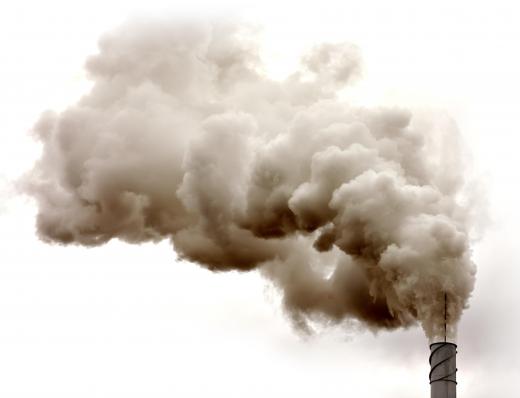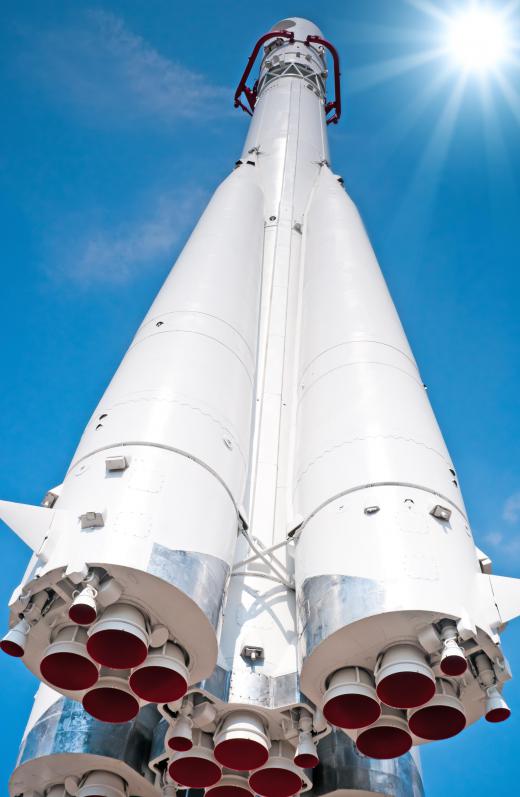What is Thermodynamic Engineering?
Thermodynamic engineering is the application of thermodynamic principles to engineering design problems. Universities have thermodynamic specialty areas within mechanical engineering departments in their colleges of engineering. Thermodynamic engineering can refer to industrial thermodynamic applications within the field of mechanical engineering, also referred to as thermodynamic process engineering.
Thermodynamics makes use of highly defined rules to model natural and experimental energy events. The laws of thermodynamics state the following: the definition of temperature and heat flow, that energy cannot be created or destroyed, that small amounts of the original energy of a system are always lost from one state to the next, and that for temperature to drop, there must be an adequate amount of heat energy lost. Techniques developed in the science of thermodynamics help engineers account for pressure, volume, and temperature changes in any number of applications and fields of study.

College coursework in engineering thermodynamics is usually part of a graduate program within the mechanical engineering major that leads to a masters or doctoral degree. Undergraduate courses such as fluid mechanics, thermodynamic systems, and internal combustion engines lead to more complex studies. Graduate coursework may consist of applied mathematics, statistical and equilibrium thermodynamics, gas dynamics, fluid dynamics, energy conversion, energy dynamics, and combustion.

Thermodynamic engineering industries design, test, and develop products that require constraints on pressure, temperature, and volume. Aeronautical companies are concerned with the application of thermodynamic principles to the design and construction of rocket systems. Air pollution control, thermal processing, and power equipment companies apply thermodynamic engineering principles in the design and testing of incinerators, scrubbers, filters, kilns, dryers, furnaces, and boilers. Other thermodynamic engineering firms design and manufacture test fixtures, such as environmental chambers with ovens and refrigerators for testing the heat tolerance of materials, and thermocouples for readout and feedback of changing test temperatures.
Traditional power industries, such as coal-fired and atomic energy plants, apply thermodynamic principles on a large scale. The green revolution that encourages alternative and clean energy sources, such as passive solar, active solar, water, wind and electricity, require thermodynamic engineering skills to calculate energy balances in exchange systems for heating, cooling, and running electrical grids for both housing and industry. Chemical thermodynamic engineering takes account of systems that experience change of state in fields as diverse as steelmaking and the production of nano-sized particles in the design of intelligent materials.
AS FEATURED ON:
AS FEATURED ON:












Discussion Comments
@GoSteelers -
Thanks for the tip! I wish our policy makers would become more knowledgeable about subjects like this. I believe using thermodynamics efficiently and effectively on energy sources and creating competition in this realm is the key to our future on this planet. Burning coal goes against the efficient laws of thermodynamics. Only a third of the coal's energy becomes electricity and the rest is lost energy. Policy needs to be shaped around sustainable solutions before it is too late!
If you are interested in learning more about this, there is a great book by Michael Moran and Howard Shapiro called, "Fundamentals of Engineering Thermodynamics." It is a textbook so it is big and a bit expensive, but quite a pleasant read. Even if you are not an engineering person, it is still easy to understand and the authors use lots of examples to help the reader along. This is an important subject to be familiar with if you are at all concerned about our energy future. Almost all of the green energy solutions scientists and engineers have come up with so far stem from thermodynamics.
Post your comments